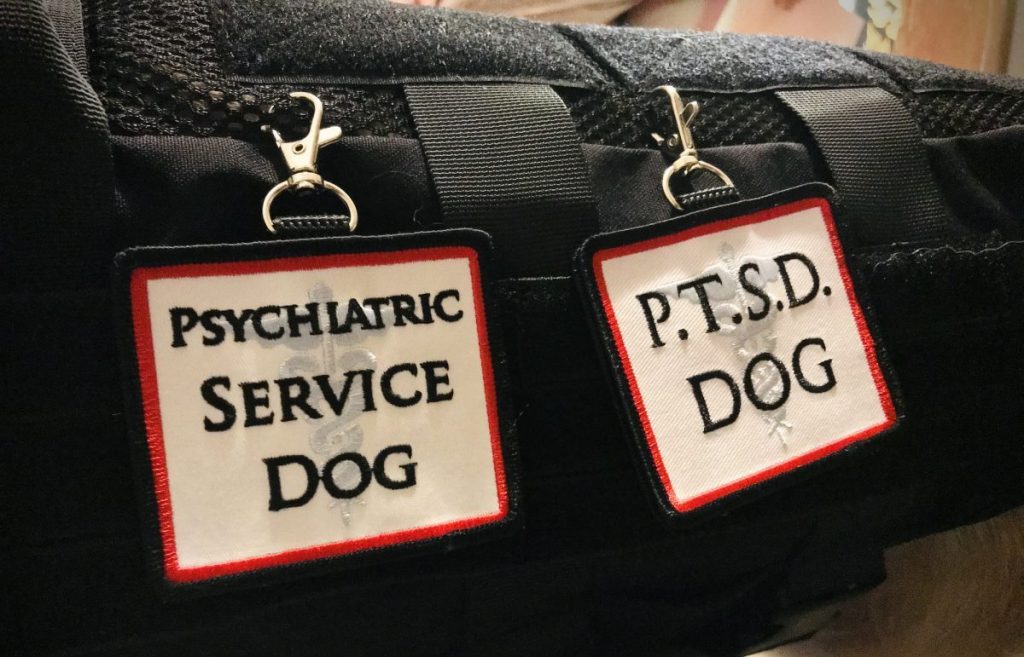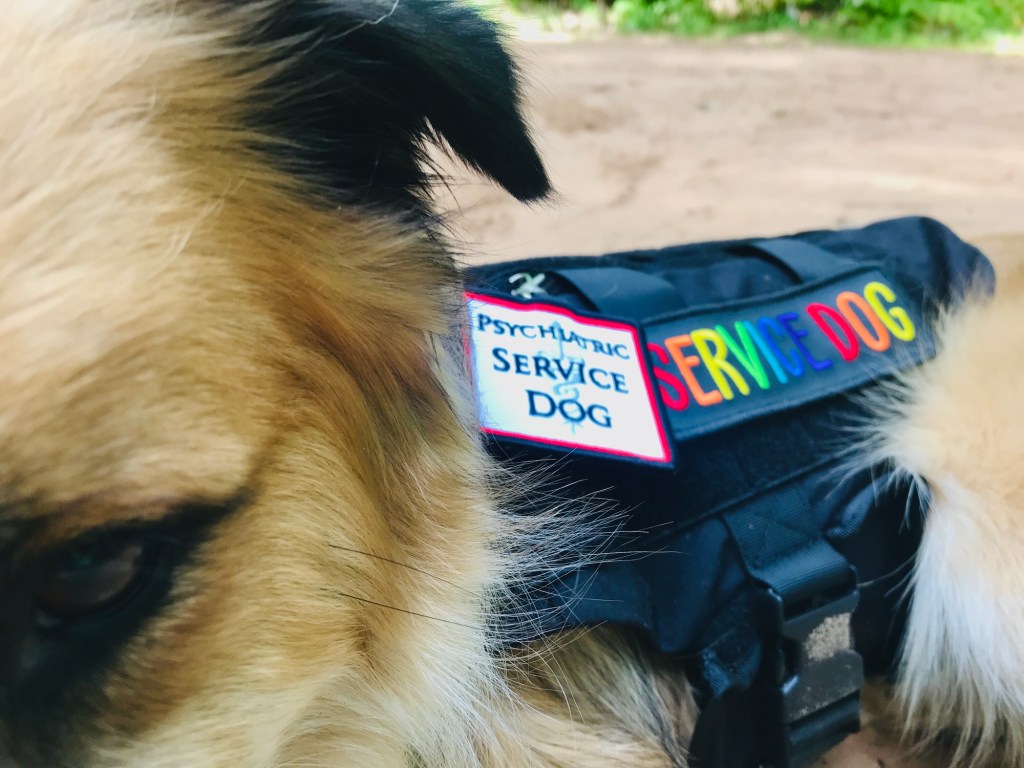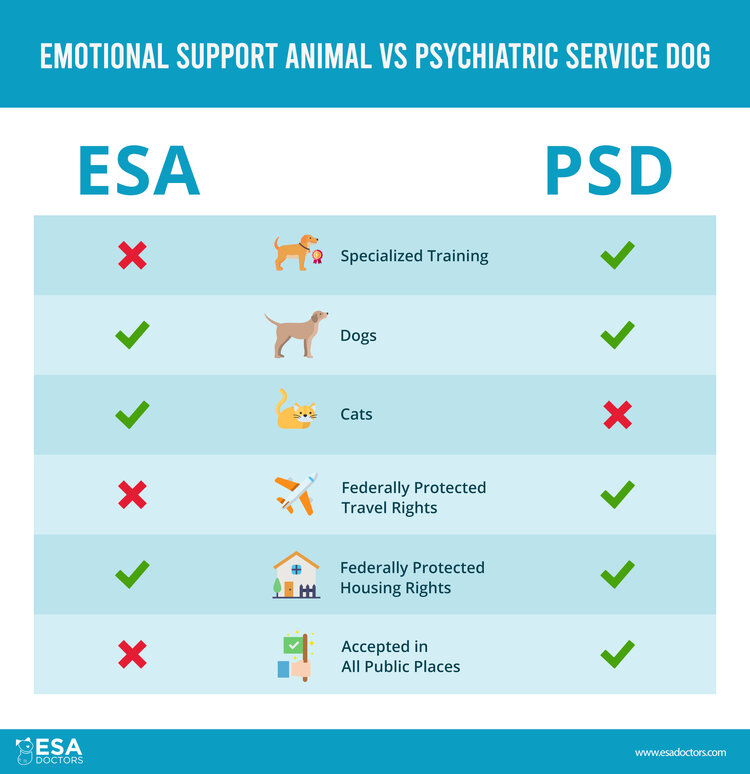Like other types of service dogs, psychiatric service dogs (PSDs) assist individuals with specific tasks directly related to mental health disorders or learning disabilities. These highly skilled dogs are adept at aiding their handlers in situations that might otherwise be overwhelming, enabling them to lead more independent and fulfilling lives.
Psychiatric service dogs play a crucial role in helping their handlers cope with various challenges associated with psychiatric disorders such as depression, schizophrenia, panic attacks, autism, and post-traumatic stress disorder (PTSD). The tasks performed by psychiatric service dogs may include alerting their handlers to signs of an impending mental health episode, providing comfort during moments of distress, creating a sense of security in public spaces, and even interrupting harmful behaviors. By offering both practical assistance and emotional support, these highly trained companions contribute significantly to their handlers’ overall mental health and stability.
Who is eligible for a psychiatric service dog?
As per the Americans with Disabilities Act (ADA) guidelines, individuals with a diagnosed disability, whether physical or mental, are eligible to obtain a service dog. The disability must significantly impact daily life, resulting in limitations to usual activities. In the case of psychiatric service dog eligibility, mental health conditions such as anxiety, depression, or post-traumatic stress disorder (PTSD) can qualify as a disability if they impose restrictions on one’s ability to work or leave the home.
To be eligible for a psychiatric service dog, the mental illness must impede independent living or the ability to work. If a mental illness exists but does not impose limitations on daily life, the individual would not qualify for a PSD. Additionally, the person must demonstrate the ability to command, care for, and provide a stable and loving home for the service dog.
What are some psychiatric service dog tasks?

Experiencing a mental health episode can be an overwhelming and challenging ordeal. It often involves a range of intense emotions, cognitive disturbances, or heightened anxiety levels. These challenges can greatly impact one’s ability to navigate daily life. During such episodes, individuals may find it difficult to focus, maintain emotional stability, or engage in routine activities. In severe cases, it may be difficult to identify what is real from what is imagined. When an individual undergoes a mental health episode, a psychiatric service dog can perform specific tasks to help. In such an event, a psychiatric service dog can:
- Anticipate and respond to early signs of distress or discomfort.
- Recognize signs of psychiatric issues and interrupt dysfunctional behaviors.
- Offer distraction and comfort during challenging moments to promote calmness.
- Provide tactile stimulation, such as licking or deep pressure therapy, to calm individuals during episodes.
- Search rooms and bark to indicate safety for individuals with anxiety or PTSD
- Signal handlers repeatedly in sedated states, ensuring awareness during emergencies.
- Attempt to wake handlers who have passed out using barking, pawing, or licking.
- Fetch phones or devices to facilitate contact with medical professionals in emergencies.
- Help an individual identify what’s real or imagined, as in the case of hallucinations.
- Signal to others to respect personal space when needed.
- Retrieve necessary medication when required.
- Provide a reassuring sense of safety with their presence.
- Alert others for assistance if they sense potential danger.
Psychiatric service dog training and qualifications

The Americans with Disabilities Act (ADA) does not mandate professional training for service dogs. Similarly, there is no service dog certification. As per ADA regulations, individuals with disabilities retain the right to undertake the training of their service dogs themselves. This provision allows for a more personalized and tailored approach, where handlers can address specific needs and tasks related to their disability.
By granting individuals the autonomy to train their service dogs, the ADA recognizes the diverse nature of disabilities. This flexibility enables handlers to establish a stronger bond with their service dogs. Additionally, it fosters a relationship built on trust and understanding. Training autonomy also encourages a sense of empowerment, as individuals with disabilities actively participate in the training process. In doing so, they also ensure the service dog is well-attuned to their specific challenges and lifestyle.
It is essential to acknowledge that the training should meet the necessary standards for the service dog to assist the handler and comply with public access regulations effectively. As such, PSDs undergo training to maintain composure in loud spaces, crowded areas, and environments with heightened stimuli. The more composed they remain, the more effective their assistance can be in supporting their handler.
Moreover, as an essential requirement, a psychiatric service dog must exhibit good behavior and a pleasant temperament. Excessive aggression or susceptibility to stress is undesirable, as these dogs serve as guides in social settings. If they’re unruly in public, it may only cause further stress, which is the opposite of the desired outcome.
Best psychiatric service dog breeds
While any breed of dog can be a PSD with the proper training, some breeds thrive with the responsibility. Additionally, some breeds are easier to train than others. If you’re considering getting a service dog and plan to train it on your own, it’s worth researching breeds known for intelligence, affection, and loyalty. A few of the best breeds for psychiatric service work include the Cavalier King Charles Spaniel, the Border Collie, and Bernese Mountain Dog. Other breeds who often work as psychiatric service dogs include German Shepherds, Golden Retrievers, Poodles, Pit Bull Terriers, and Labrador Retrievers.
Legal rights and considerations

The ADA grants individuals with disabilities the right to be accompanied by their service dogs in various public places. Psychiatric service dogs are not considered pets under the ADA but are recognized as working animals, trained to perform specific tasks that mitigate the impact of a person’s disability. This legal framework ensures that individuals with disabilities have equal access to facilities and services, including restaurants, stores, transportation, and other public areas, alongside their service dogs. Additionally, individuals with psychiatric service dogs are entitled to reasonable accommodations in housing. This includes the right to live with their service dog in housing facilities that may have pet restrictions, providing necessary support for their mental health.
While the ADA grants broad access rights, there are certain exceptions and limitations to consider. Some private spaces may restrict service animals for health and safety reasons. Additionally, the ADA only covers service animals that are individually trained to perform specific tasks. These legal considerations underscore the importance of recognizing and respecting the rights of individuals with psychiatric service dogs, ensuring they can fully participate in public life while maintaining a balance with specific exceptions and limitations.
Service dog training process
Service dogs undergo a comprehensive training process, often conducted by professional trainers and organizations specializing in assistance dog training. This rigorous training, whether through a professional organization or autonomously, is paramount for service dogs. This highly specialized training equips them with the skills to assist individuals with specific disabilities. These training programs focus on tasks relevant to the handler’s needs, ensuring the service dog can effectively perform tailored duties such as guiding, alerting, or providing emotional support.
The training process for service dogs is an ongoing endeavor, extending beyond the initial training period. Continuing training and reinforcement are essential to maintain and enhance the dog’s task proficiency. Handlers, sometimes with the guidance of professional trainers, engage in regular exercises and practice sessions to reinforce commands, refine skills, and adapt to the evolving needs of the handler. This commitment to continuous training ensures that service dogs remain reliable and effective.
Differences between psychiatric service dogs and emotional support dogs

The key distinction between a psychiatric service dog and an emotional support dog lies in their training, roles, and legal status. While a psychiatric service dog is trained to perform specific tasks that mitigate the effects of a person’s psychiatric disability, an emotional support animal (ESA) offers comfort through their presence alone. As previously stated, psychiatric service dogs have legal access rights to public spaces, including restaurants, stores, and transportation, ensuring their handlers’ equal participation in daily life. The specialized training and task-oriented nature of psychiatric service dogs set them apart as working animals that actively contribute to the management of a person’s mental health.
While emotional support dogs provide comfort and companionship to individuals with emotional or psychological conditions, they do not undergo the same rigorous training as psychiatric service dogs. Although ESAs offer valuable emotional support, they are not trained to perform specific tasks related to a disability. Consequently, emotional support animals do not have the same legal access rights as service dogs under the ADA. Still, their presence is accommodated in pet-free housing under the Fair Housing Act (FHA). Understanding the distinctions between psychiatric service dogs and emotional support animals is crucial for individuals seeking appropriate accommodations and legal recognition for their specific needs.

Life-changing benefits of service dogs
The importance of service dogs cannot be overstated in the lives of individuals facing physical or mental health challenges. These remarkable companions not only perform crucial tasks, but also provide unwavering emotional support, fostering independence and resilience. It is imperative to recognize the unique role service dogs play and actively contribute to creating an environment of support. To best support individuals with service animals, fostering awareness, respecting the legal rights and access of service dog handlers, and cultivating empathy are essential. By embracing the vital contributions of service animals and building a culture of inclusion, we can collectively ensure that those relying on these extraordinary companions experience the dignity, freedom, and understanding they deserve in their daily lives.









